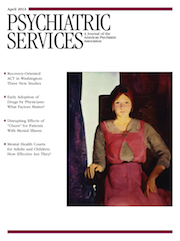The Autisms, 4th edition
Our current best understanding of the nature and clinical phenomenology of autism spectrum disorders is reflected in the title of Coleman and Gillberg’s new edition of their text, The Autisms, which is an update of volumes previously titled The Biology of the Autistic Syndromes. The primary thesis driving Coleman and Gillberg’s work is the concept of autism not as a “single large spectrum of disease” but as a “specific set of symptoms found in a conglomeration of different diseases.” Expounding on this thesis, the authors have produced a volume that is a far-reaching and comprehensive presentation of the state of the current research and the clinical understanding of autism spectrum disorders and their various clinical presentations.
The Autisms is really three books in one, with each part of the text having a different focus and style of presentation. Part 1, The Autisms as a Spectrum, is the most interesting and clinically relevant collection of topics. The authors begin by outlining the diagnosis and clinical course of autism spectrum disorders in infancy, childhood, adolescence, and adulthood. The authors argue that many of the disparate and varied presentations of the autism spectrum can be explained by recognizing them as multiple disease entities. These chapters highlight the authors’ vast clinical experience with this population and are extremely helpful for both the general practitioner as well as specialists who work with individuals with autism spectrum disorders and their families. The chapter on Asperger syndrome nicely recapitulates the evidence for and against the inclusion of this as a separate syndrome within the diagnostic system for autism spectrum disorder.
Part 1 goes on to describe the comorbidities and associated symptoms that are frequently experienced with autism spectrum disorders and provides comprehensive analysis of the epidemiology of these disorders, including the increase in their diagnosis in recent decades and possible reasons for this trend. The authors outline the evidence for neuroanatomical differences, as well as what is known (and not known) about the neuropsychology, biochemistry, immunology, and endocrinology of these disorders.
Part 2, The Autisms as a Syndrome, presents three chapters that form a comprehensive presentation of an exhaustive list of genes, chromosomes, and syndromes that have been associated with autism. These chapters suffer from the all-inclusive presentation, which touches on more than 100 genes reported to be associated with autism. The problem is highlighted by the inclusion of the Fragile X gene, which affects up to 5% of individuals with autism, in the same list as Sanfilippo Syndrome, which has been reported in a handful of case reports. Clinically, these chapters are less relevant; it is not clear how this information would be useful in terms of the patient who is sitting in front of a provider.
Part 3, Treatment and Support in the Autisms, is the weakest of the three and almost feels like an afterthought to briefly address some of the educational, behavioral, and medical treatment interventions that have been studied in autism spectrum disorders. It is striking, given the authors’ attempt to provide a comprehensive view, that the evidence base for autism treatments is largely glossed over. Very little attention is given to comparing the level of evidence for various therapies, particularly for the noncore symptoms of autism. Throughout the book, description of psychopharmacology treatments seems to be somewhat out of date and highly based on general clinical impressions rather than an evidence base. The clinical recommendations that lithium “can be effective in controlling pubertal behavioral/mood swings” and that tricyclic antidepressants can “sometimes help in reducing depressive symptoms” provide noteworthy examples.
In general, the strength of The Autisms is in part 1, which is a helpful reference guide for clinicians working with individuals with an autism spectrum disorder. Part 2 provides a useful reference text for anyone who has a particular interest in any specific disorders, common or rare, that have been associated with autism. Part 3 is less helpful for the clinician, who would be better served by a more evidence-based text on autism spectrum disorders that focuses on current treatments.



